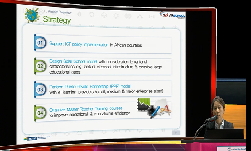The purpose of this study was to examine the ability of the New Student Transition Questionnaire (NSTQ) factors to predict retention of first-time, full-time, degree-seeking Bowling Green State University (BGSU) students above and beyond the effect o...
http://chineseinput.net/에서 pinyin(병음)방식으로 중국어를 변환할 수 있습니다.
변환된 중국어를 복사하여 사용하시면 됩니다.
- 中文 을 입력하시려면 zhongwen을 입력하시고 space를누르시면됩니다.
- 北京 을 입력하시려면 beijing을 입력하시고 space를 누르시면 됩니다.
Determining the predictive validity of the New Student Transition Questionnaire at Bowling Green State University (Ohio).
한글로보기https://www.riss.kr/link?id=T10608030
- 저자
-
발행사항
[S.l.]: Bowling Green State University 2005
-
학위수여대학
Bowling Green State University
-
수여연도
2005
-
작성언어
영어
- 주제어
-
학위
Ed.D.
-
페이지수
87 p.
-
지도교수/심사위원
Adviser: Judy Alston.
-
0
상세조회 -
0
다운로드
소속기관이 구독 중이 아닌 경우 오후 4시부터 익일 오전 9시까지 원문보기가 가능합니다.
부가정보
다국어 초록 (Multilingual Abstract)
The purpose of this study was to examine the ability of the New Student Transition Questionnaire (NSTQ) factors to predict retention of first-time, full-time, degree-seeking Bowling Green State University (BGSU) students above and beyond the effect of known retention predictors. The study investigated the ability of the NSTQ to predict the retention of first-year students from fall to spring semester and then fall to fall semester.
A total of 9,693 first-year students enrolled in English 110, 111 or 112H from BGSU participated in this study in the fall semester for the past four years (2000--2003). The average survey response rate across the four years was 70%. Of the total number of surveys collected, 5,200 provided their personal identification numbers (PIDs) and were included in the data analysis (BGSU, 2003c).
The mean HSGPA for participants was 3.12 and the three housing assignments that emerged as known retention predictors include: Chapman, Health Sciences Residential Community (HSRC), and Honors. The gender of participants was a representative sample of the university, 57.9% females and 42.1% males. Race was also representative of the university students with 14% non-Caucasian students.
Factor Analysis was used to describe the associations among the 21-item NSTQ statements and logistic regression was run with the known retention predictors and the NSTQ scales. Results of the study indicated that adding the NSTQ scale scores to known retention predictors significantly improved the ability to predict retention.
분석정보
연관 공개강의(KOCW)
-

Education Policy at the Party Conferences
Teachers TV Teachers TV -

2014 이러닝 국제 콘퍼런스 : What is the Lessons from Education Support Project~
한국교육정보진흥협회 Boseon, Kim -

Early Sex Education: The Debate
Teachers TV Teachers TV -

Personal Finance Education: The Money Quiz
Teachers TV Teachers TV -

Further Education: Work Experience
Teachers TV Teachers TV






